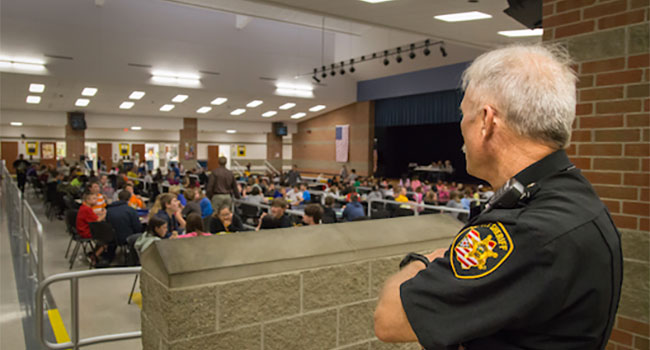
School Districts Across the Country Reconsider Police in Schools
As thousands of people across the country protested in response to the police killings of George Floyd and Breonna Taylor, multiple school districts are considering removing school resource officers from schools.
- By Yvonne Marquez
- June 12, 2020
As thousands of people across the country protested in response to the police killings of George Floyd and Breonna Taylor, multiple school districts are considering removing police presence from schools.
Minneapolis Public Schools cut ties with the Minneapolis Police Department a week after a police officer killed George Floyd by kneeling on his neck for almost nine minutes. The school board unanimously voted to end MPD’s contract to provide school resource officers, reported the Star Tribune.
“I value people and education and life,” school board chairwoman Kim Ellison told the Star Tribune. “Now I’m convinced, based on the actions of the Minneapolis Police Department, that we don’t have the same values.”
MPD Deputy Chief Erick Fors said in a statement that they would work with the district on security and safety issues. Superintendent Ed Graff will come up with a new plan for school safety by the board’s Aug. 18 meeting.
A couple days later, Portland Public Schools Superintendent Guadalupe Guerrero announced on Twitter that he would discontinue the presence of school resource officers from the Portland Police Bureau. Mayor Ted Wheeler later announced he would end the school resource officer programs at Portland Public, David Douglas and Parkrose districts, reports Oregon Public Broadcasting.
“What we are hearing loudly and clearly from the community is that they do not want this direct, physical, ongoing presence in the schools,” Wheeler told OPB.
Guerrero sent a memo to district leaders that outlined plans to support students “through positive relationships, support, and affirming school culture and climate.” In the memo, he also recommended creating a community task force focused on safety with input from students, providing data on student discipline, and developing a guide for schools on how to consult law enforcement.
On Thursday, the Denver Public Schools Board of Education unanimously voted to remove school resource officers from schools, ending the district's contract with Denver Police Department. Four out of seven school board members showed early support for the resolution.
“More students of color are impacted by law enforcement within our walls," Jennifer Bacon, vice president of the school board and co-author of the resolution, told a local news station. "They are highly ticketed and most likely to be arrested."
DPS will gradually reduce the number of school resource officers by 25% by the end of the year and eventually remove all officers by June 2021.
"We heard from several stakeholders tonight, with pros and cons on both sides," DPS Superintendent Susana Cordova told CBS4. "It’s important to think about the full context here: strong safety resources on our campuses; trusting relationships with the adults in our schools; and the urgent and absolute need to end the school-to-prison pipeline. I believe the board has voted on this resolution with the best interest of students at heart."
In Los Angeles, Chicago, and Madison, Wisconsin, teachers unions are urging school districts to remove police officers from schools. Many organizations have advocated it for years. They’re calling for an end to contracts with local police departments and instead calling for more mental health services for students.
“We see the systematic racism that exists in our current structures and join the voices of our students and our community in calling for dramatic change in how we educate and interact with all of our students, especially those most marginalized in our schools and society,” Madison Teachers Inc. President Andy Waity said in a statement.
In Louisville, Jefferson County Public Schools haven’t had school resource officers for a year due to budget constraints. Jefferson County Board of Education is considering hiring an internal security team to have more control over policies and accountability, reported a local news station. The school board doesn’t have a set date of when school security policies will be voted on.